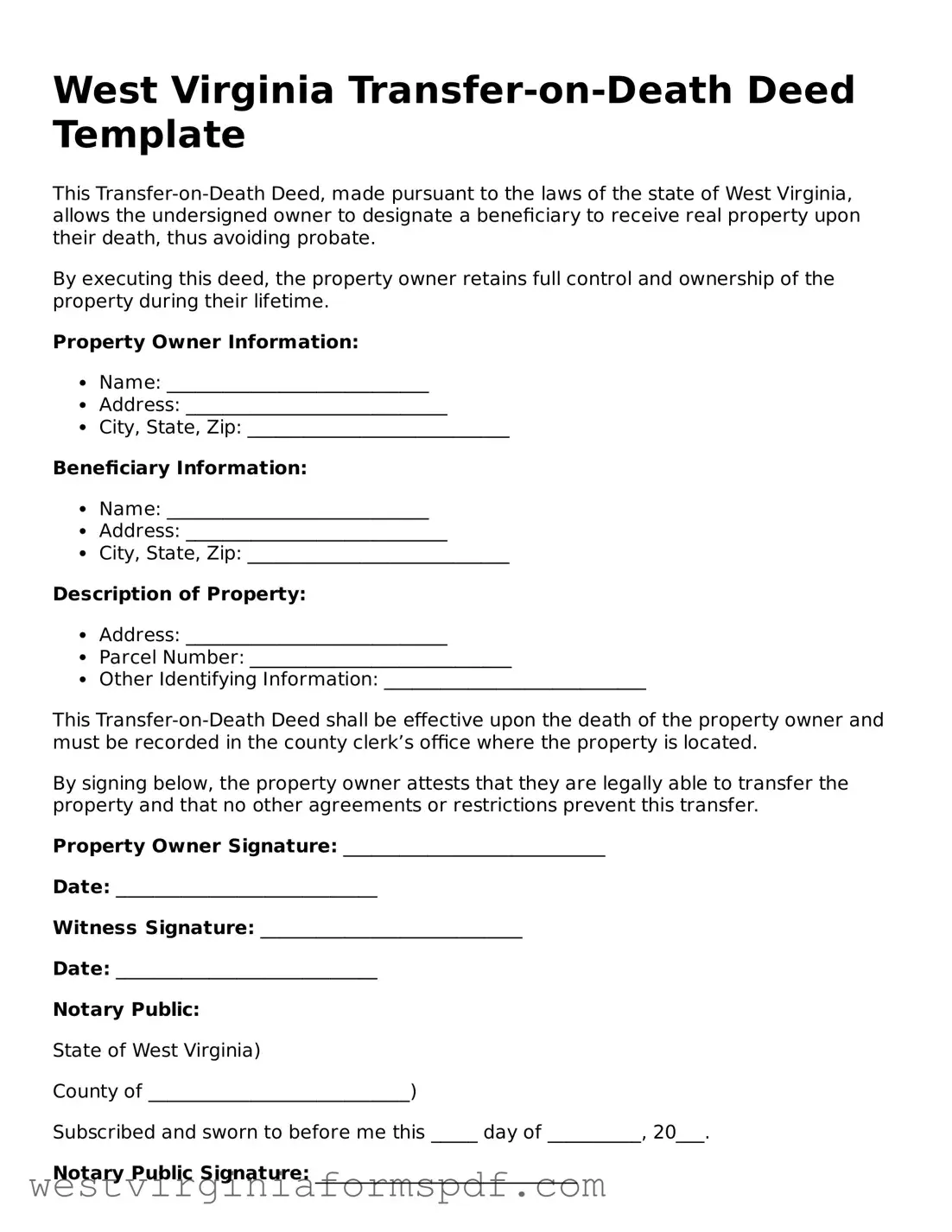What is a Transfer-on-Death Deed in West Virginia?
A Transfer-on-Death Deed (TODD) is a legal document that allows a property owner to designate one or more beneficiaries to receive their property upon their death, without the need for probate. This deed is particularly useful for simplifying the transfer of real estate and avoiding the often lengthy and costly probate process. In West Virginia, the TODD must be properly executed and recorded to be valid.
Who can create a Transfer-on-Death Deed?
Any individual who owns real estate in West Virginia can create a Transfer-on-Death Deed. This includes homeowners, property investors, and anyone holding title to real property. It’s important to note that the individual must be of sound mind and at least 18 years old when executing the deed. If the property is owned jointly, all owners must agree to the transfer.
How do I properly execute a Transfer-on-Death Deed?
To execute a Transfer-on-Death Deed in West Virginia, follow these steps:
-
Obtain the official form for the Transfer-on-Death Deed.
-
Fill out the form with the required information, including the names of the beneficiaries.
-
Sign the deed in the presence of a notary public.
-
Record the deed with the county clerk's office where the property is located.
Make sure to keep a copy of the recorded deed for your records. Failure to record the deed may result in it being invalidated.
Can I change or revoke a Transfer-on-Death Deed after it has been created?
Yes, you can change or revoke a Transfer-on-Death Deed at any time before your death. To do this, you must execute a new deed that explicitly revokes the previous one or simply create a new TODD that updates the beneficiaries. It’s crucial to record any changes with the county clerk to ensure they are legally recognized.
What happens if the beneficiary predeceases me?
If a beneficiary named in your Transfer-on-Death Deed dies before you do, the property will not automatically pass to that beneficiary's heirs. Instead, it is advisable to designate alternate beneficiaries in the deed. If no alternate is specified, the property will pass according to your will or, if there is no will, according to West Virginia's intestacy laws.
